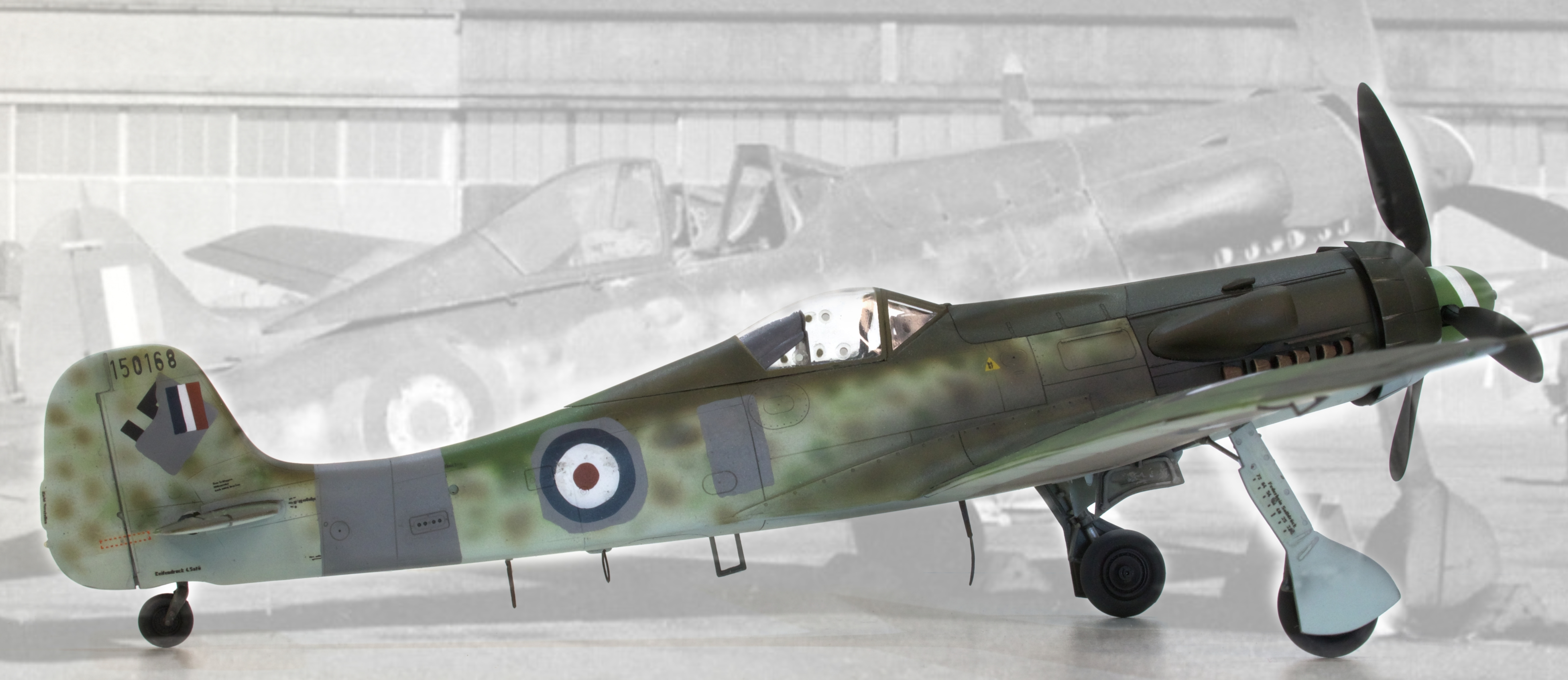
The following op-ed essay may not be to everyone’s interest so if you’d like to skip it and go directly to the model, please click Here
History Lessons
That men do not learn very much from the lessons of history is the most important of all the lessons of history.
Aldous Huxley
The Ta-152H was the high altitude variant of what might have been Kurt Tank’s crowning achievement in aircraft design, the ultimate version of the Fw190 family. The first version, the Fw190A had first seen action in 1942 when it gave the RAF a very nasty surprise in its domination of the Spitfire Mk.V. The final version to reach production was the Fw190D which continued the family tradition of proving to be a very effective airplane indeed.
The Ta-152 featured a number of advanced features for a fighter aircraft of the period and there’s no doubting that had time, resources, and both the RAF and USAAF have permitted it, the Ta-152 would have posed a very serious treat to the Allied air forces. One only has to look at it to know it’s different; the wingspan, the engine and its general purposeful look bely a serious fighter.

Thankfully, the Ta-152 didn’t reach its full development potential, and thankfully it didn’t have any significant impact on the RAF’s, the USAAF’s, nor the rest of the Allies’ war effort to defeat the Third Reich and all it stood for. Thankfully, Kurt Tank’s masterpiece wasn’t used to kill great numbers of men who risked their lives to end the evil perpetrated by the Germans on Europe.
So why did Trimaster make a plastic injection-moulded model of it in 1989? Well, that’s easy; to sell it, and through doing so make a profit. Fair enough. Market economics first principles proscribe that if there is a demand for a product the market will find a way to supply it. So, what is the demand? Why would the market look for a product such as a model of this machine, a machine that achieved very little, has minimal historical legacy, and was in fact created by slave labour in one of the most inexplicably heinous periods of modern history.
To begin in the macro, I am part of the market, I have had one. Notwithstanding that my particular kit was actually a gift from Robert Bracken, I still built it so my motives are relevant. In this instance I built the kit because I like the challenge that Luftwaffe kits pose in terms of the late war paint scheme they carry. Further, I really enjoy the forensic process of interpreting the black and white images which all that remains of these aircraft.
I dare say that I am far from alone in these motivations to build Luftwaffe models. Indeed, I’ve built several, some of which are featured on this site; Here, here, here, and here. However, there’s a difference between those builds and the one featured in this piece – the tail markings. I’ll come back to this article’s subject model later but for now I call your attention to this piece from a couple of years ago which explains the why of my previously built models with the swastika.
Modelling is a craft, and it’s our nature to practise crafts to the best of our own ability. We frequently try things that are difficult and clever, usually for our own satisfaction, sometimes for others. There’s a fine line between craft and art, and I’d argue they are mutually inclusive. So, I built this kit to stretch myself in achieving a realistic and well executed rendition of a late war Luftwaffe scheme.

Setting that motive aside though, there is also a vaguely disturbing popularity of Luftwaffe models, unseemly even, which is harder to explain or understand – for me at least. An anecdote; I also maintain an Instagram account which at its basest level provides an instant measure of popularity and interest in my subjects. Why is it that Luftwaffe subjects get so much more likes, comments and shares than practically any other topic in history and scale modelling? They aren’t even my best models, but perhaps they are in some warped way the coolest? Why do so-called “WW2 History Only, Non-Political” feature German subjects far more frequently than Allied?
This “cool” factor is simultaneously the simplest and most concerning. Simple because, frankly, the German equipment, paint schemes and uniforms did look… I struggle to find a word other than cool. Concerning because, well, why would machines that were built specifically to defend and prolong a regime as evil and inhuman as the Third Reich ever be seen as cool? These airplanes, tanks, ships, and uniforms all bore the the swastika, or Hakenkreuz as it’s pedantically – euphemistically – referred to as by those who know. This wasn’t a national symbol, in fact it was nothing German at all, those were the crosses, the Balkenkreuz. No, the swastika was the National Socialist Party’s symbol, nothing to do with Germany or the Germans in any nation-sense (and don’t get me started on “most Germans weren’t Nazis“; if not actually card-carrying members the overwhelming majority – exceptions are relatively few, one is below and another is here – were at the very least culpable as enablers).
Difficulty is the excuse history never accepts.
Edward R. Murrow

Whatever the reason for the popularity of the Third Reich in modelling, it is nonetheless vaguely disturbing. If ever a reminder was needed of the danger one megalomaniac autocratic leader can pose to the rest of the planet, it’s what Putin is doing in the Ukraine.
Is it a bit of a stretch to leap from plastic models to Russian aggression? Perhaps.
History is a vast early warning system.
Norman Cousins
When I pulled my 20+ year-old kit of the Fw Ta-152H-1 and decided to stretch myself in building a late war Luftwaffe subject, as I will continue to do from time to time, I chose to model it as a defeated combatant, no longer able to defend a German nation whose unspeakable evil in the defence of a political party. Instead, it is modelled in the markings of one of its victors, one whose sacrifice in defeating the evil represented and defended by these aircraft and those who flew them, was without limit of effort or self-sacrifice. It is that above all else which is “cool” and we would do well to remember that.
Dragon 1/48 Focke Wulf Ta-152H-1

Dragon’s kit is relatively user-friendly and assembles simply. In addition to the plastic, the kit includes a couple of small PE frets but unlike the Dragon Fw190D-9 kit I built previously, brass tube and white metal parts were not included in this example. I found the plastic in this example to be hard and brittle, and subsequently not very easy to work with. This might have something to do with my kit being well over twenty years old! Fortunately, the engineering and fit is good and there wasn’t much work necessary to complete the construction to the point of readiness for paint.
I chose to move this one to painting stage quickly, and display it with the canopy closed and so did the bare minimum for the cockpit and assembled the engine only insofar as to make what needed to be visible in the main wheel wells visible.




Camouflage and Markings
For reasons described above, I preferred to build my Ta 152H in non-German markings, a quick image search for ideas soon identified this aircraft as my chosen subject.
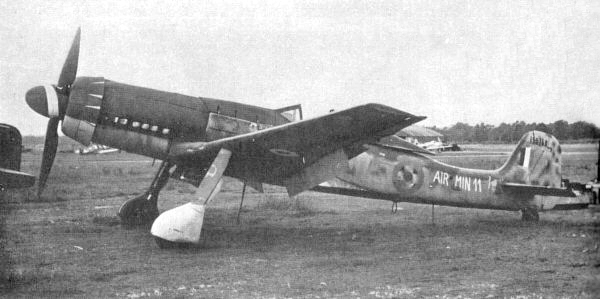



A H-1 variant, WkNr. 150168 was handed over to the RAF at Leck in Germany at war’s end and later taken back to England for evaluation. The photos above show the aircraft at two different times; the image top left was – I believe – taken in Germany soon after the RAF took possession and it is the only photo I have found of it in Germany, and the only one to show the port side. The other three photos were all taken later in 1945 at Farnborough in England at an exhibition of German aircraft open to the public. The distinction is important because the RAF painted at least the spinner prior to the exhibition, and perhaps more than that.
The base colours are quite well established to be RLM81/82 over 76. RLM 81 and 76 are well defined and posed no problem. The RLM 82 intrigued me because I was going to mix it and was looking for a master to match. I quick image search however found this…
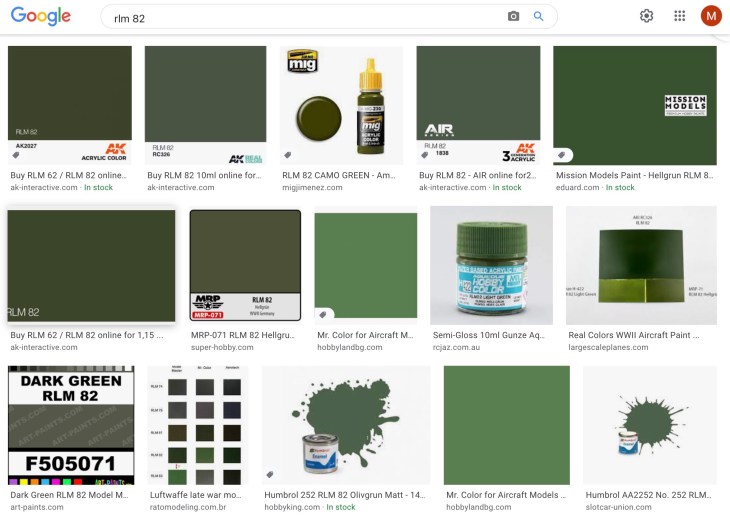
…which doesn’t help much at all. Next, I started looking for good quality original colour photos and found these…


…which more or less confirmed the colour to be a bright, light green. Lastly, I corresponded with some like-minded obsessed individuals and was able to see a couple of hi-res photos of actual RLM82-painted artefacts.
Comparing what I saw to my paint stash I quickly determined that I had a good match straight out-of-the-tube and I set to with the base paint scheme. The mottle was completed with an 81/82 combination and I painted the wavy leading edge with the use of blutack. There’s no direct evidence that parts of the wing underside were left unpainted, but enough circumstantial evidence exists for me to mask and paint the centre sections aluminium.



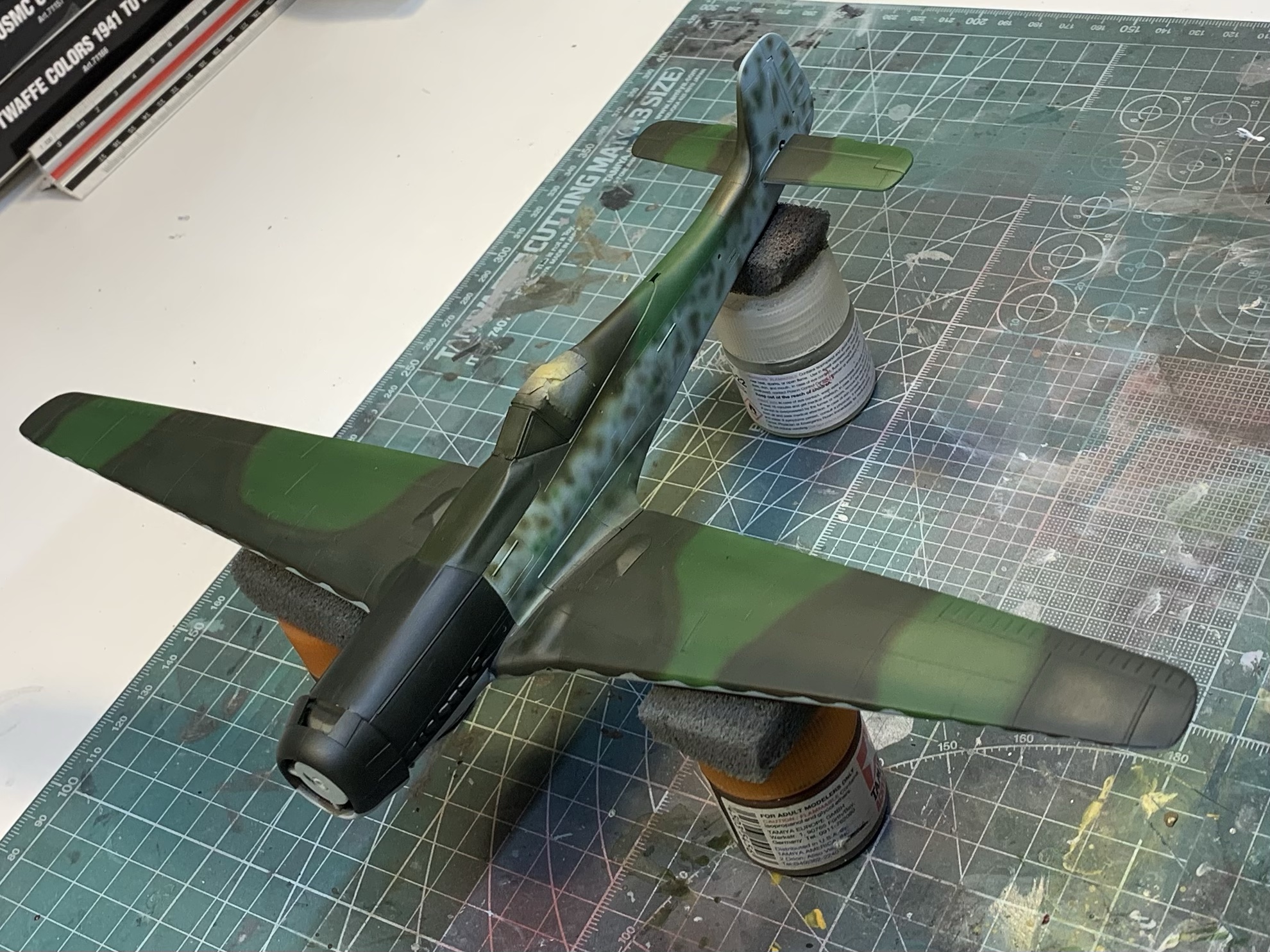


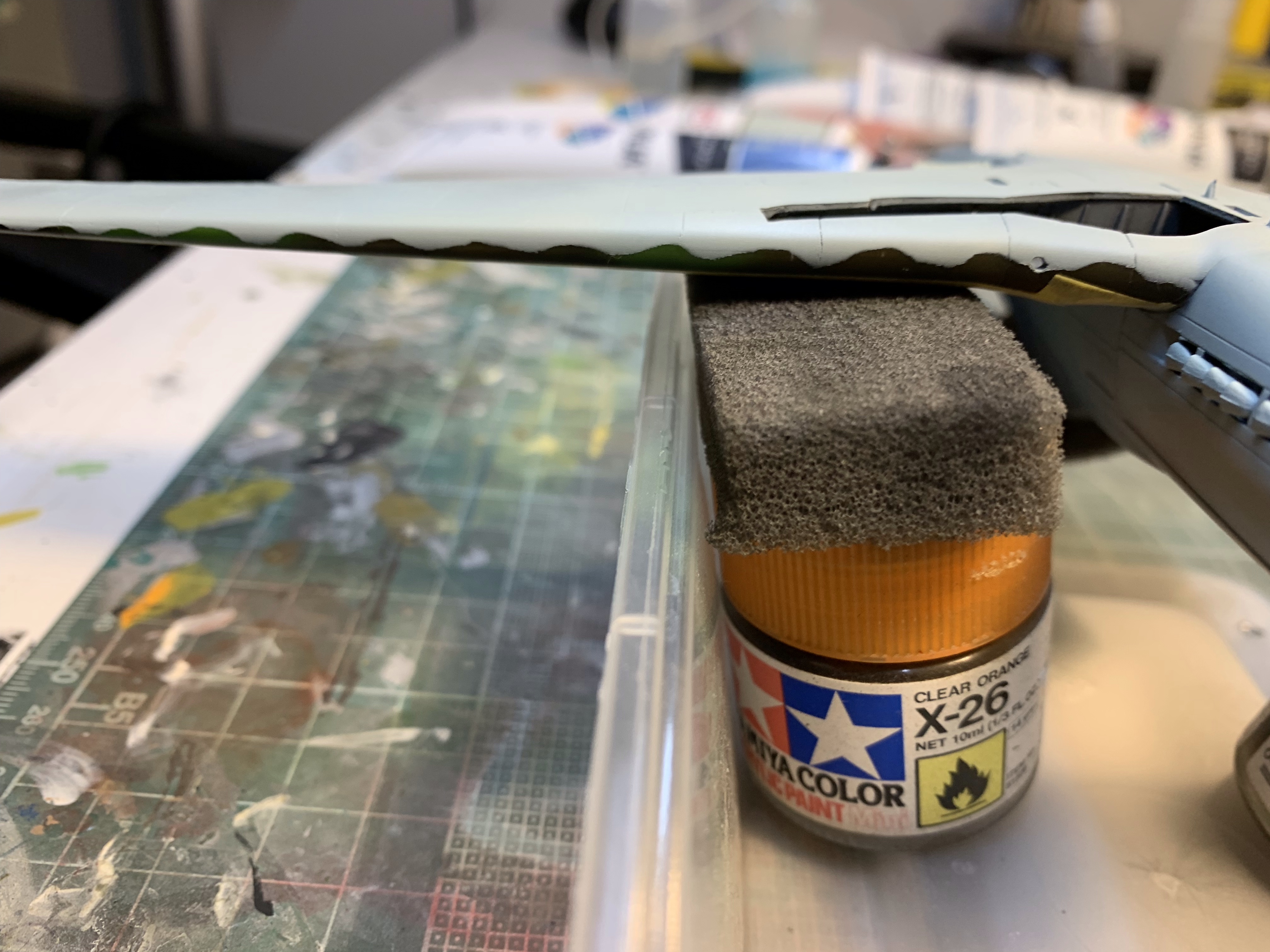
Keen eyed readers will notice in the top left pic that I went back later and made an adjustment to the camo scheme on the starboard wing after it was pointed out to me that in the pic below one can just see the 81 was angled much sharper than I originally had it.

Markings


As a captured aircraft the markings were out of the ordinary. The Luftwaffe markings were over-painted with what appears to be grey before rough and ready application of RAF roundels. Of note, the starboard swastika was not completely covered, on the same side the roundel was dirty and on the port side the aircraft’s new owner has it’s ownership title clearly marked in the form of “AIR MIN 11” painted in white.
I designed and cut masks to complete the markings with my Silhouette. The shapes were made deliberately non-symmetrical to represent the hand-painted nature of the actual markings. Actually, making them random took much longer than designing them!
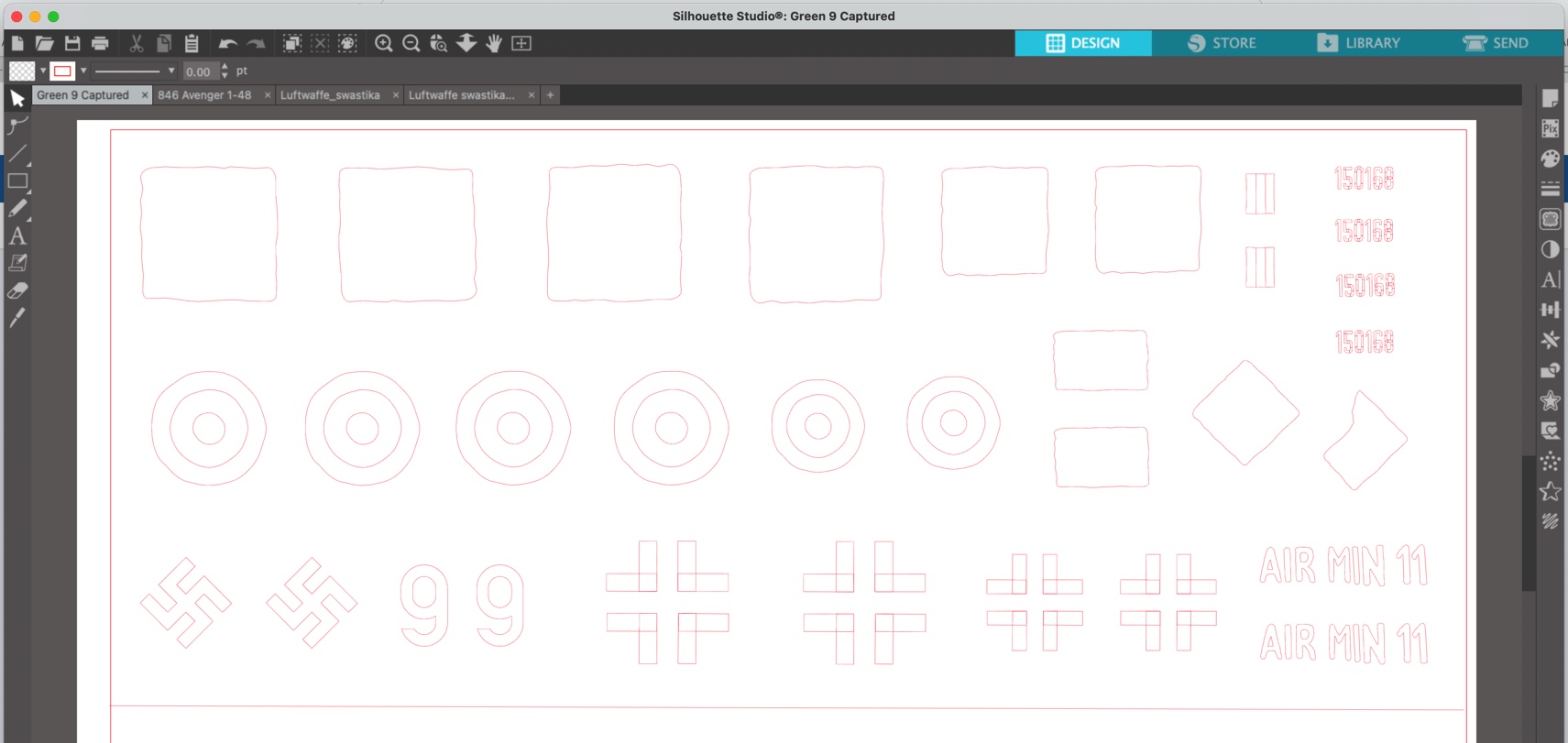
First, I painted the German markings as I wanted them to show a littel under the grey, and needed the starboard swastika and port fuselage cross to be visible anyway.
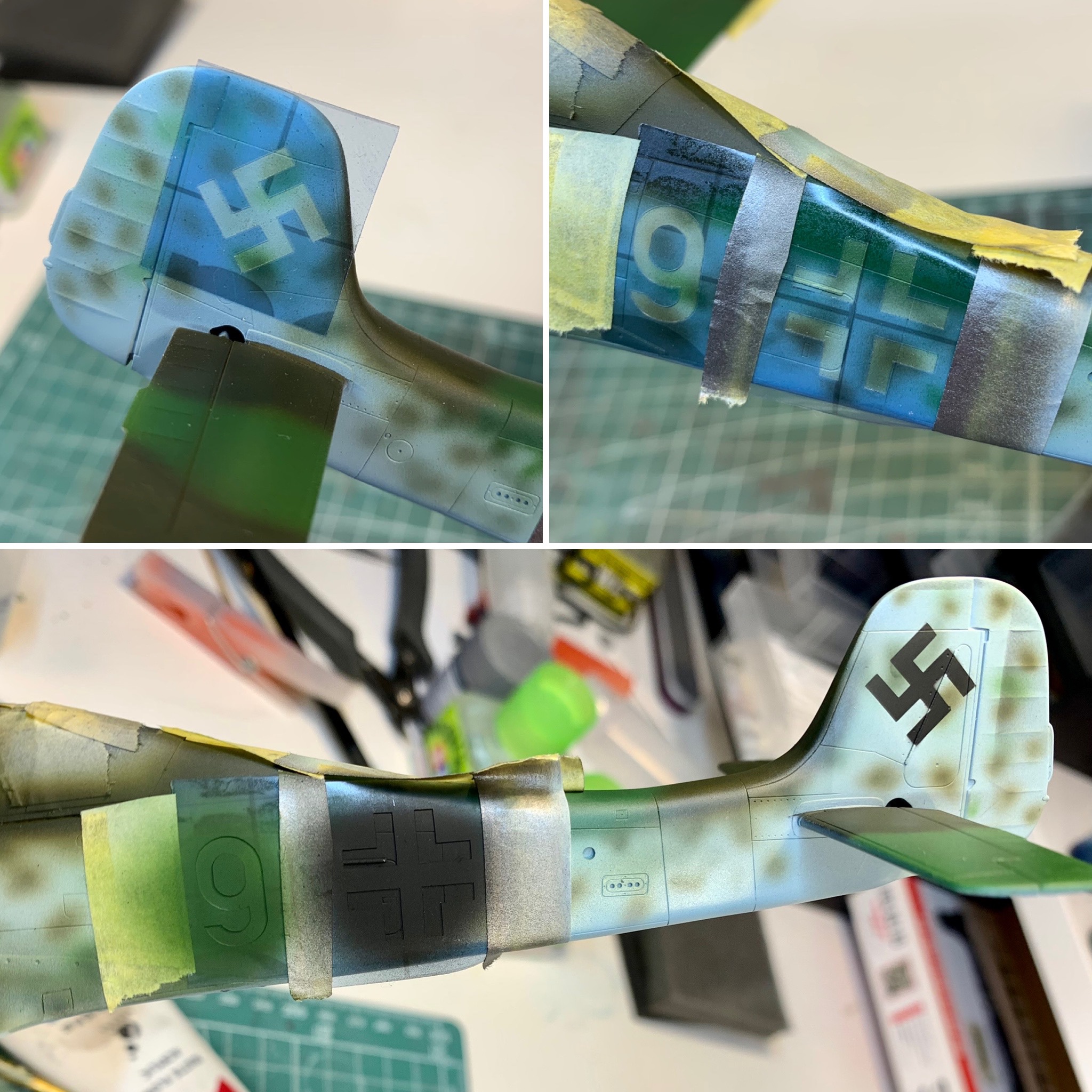



When I came to the grey I rounded the corners of the masks with blutack to better match the actual (and note how I am a chronic re-user of tape…). I was careful to leave much of the port fuselage cross visible as well as the starboard swastika. I also painted the WrkN. which tested the limits of the Silhouette in its ability to cut small masks.



Next it was time to paint the roundels and finally the “AIR MIN 11” marking.


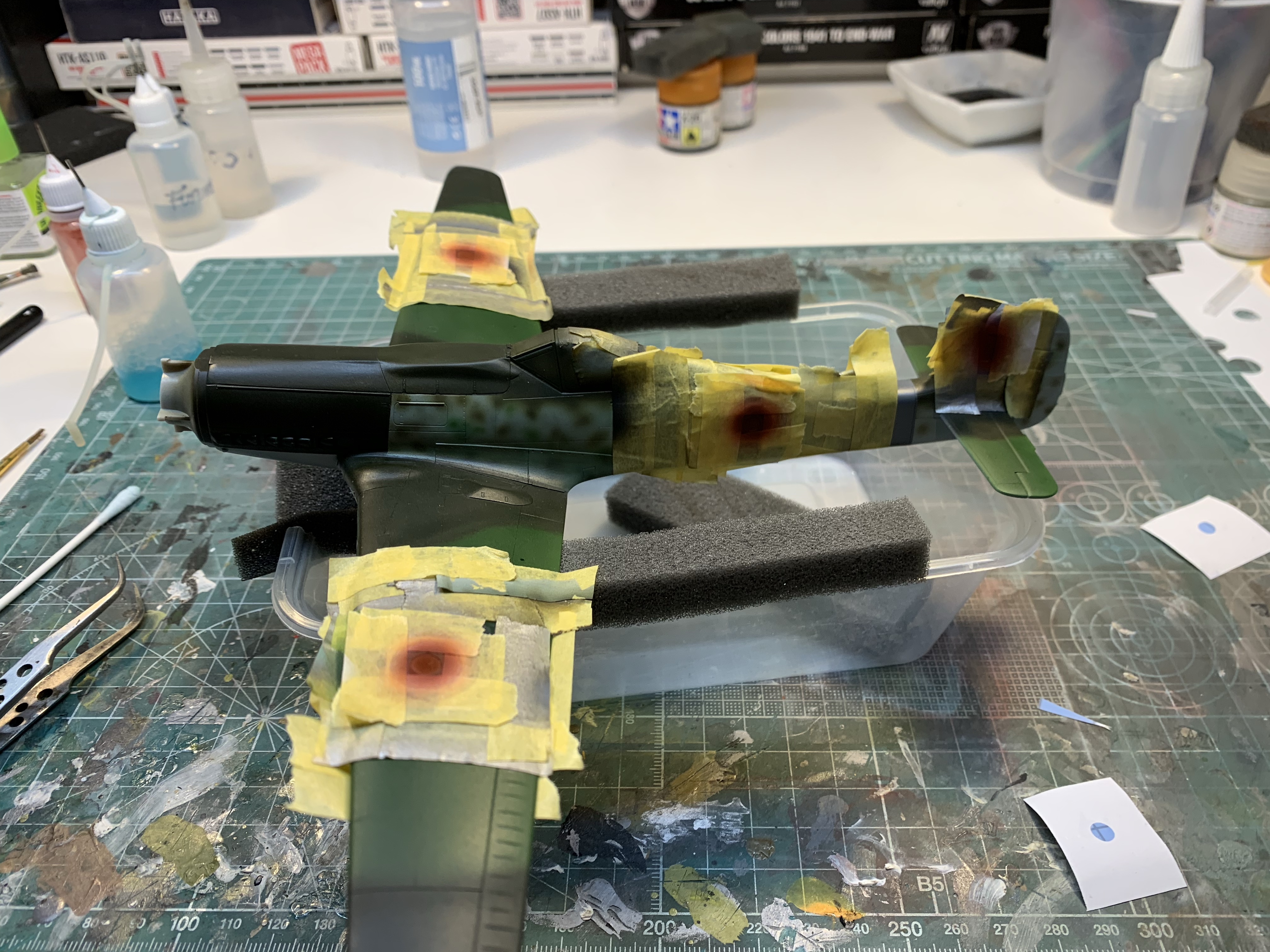
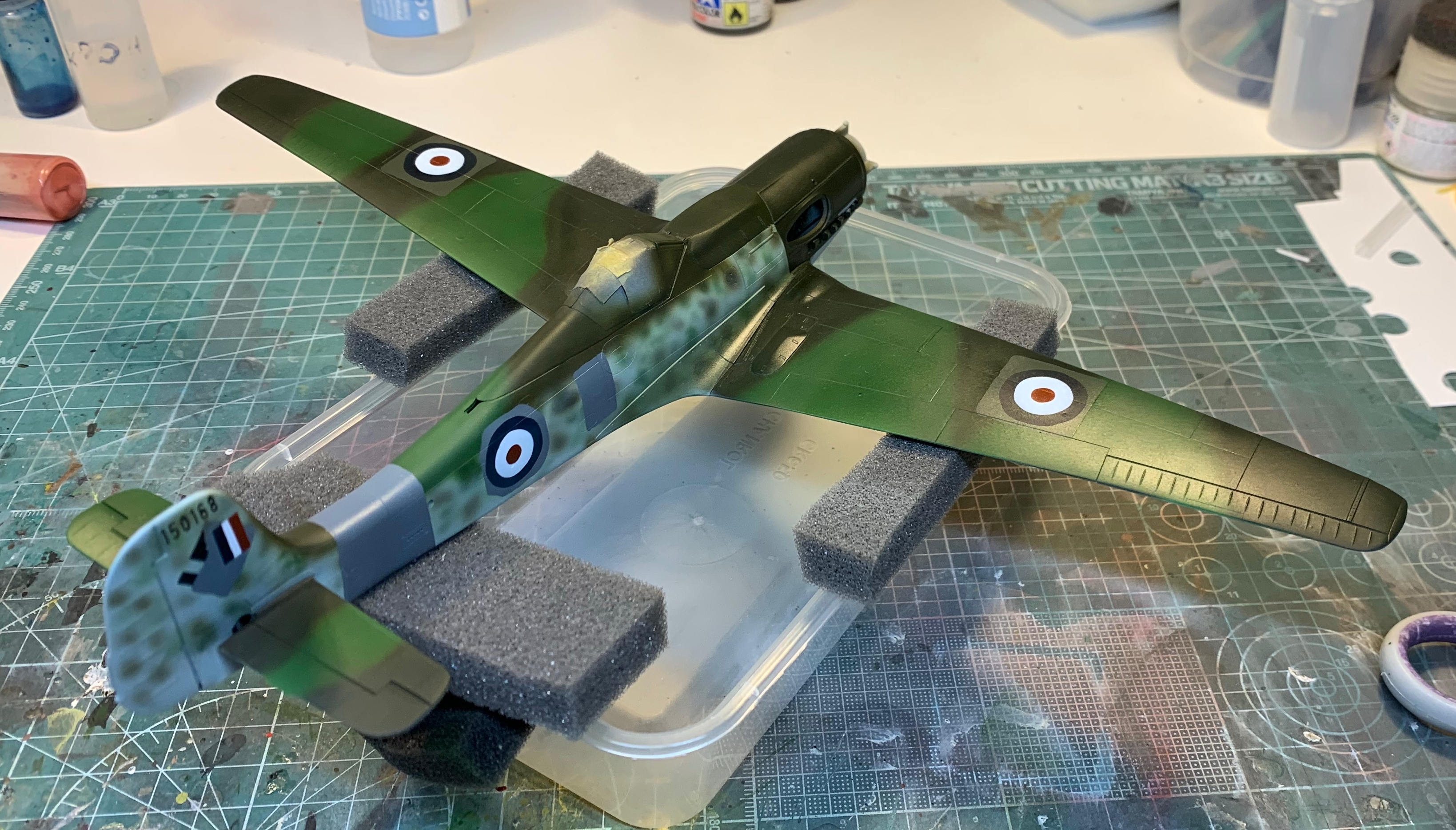


A quick comparison was in order to compare model to actual before starting the weathering.
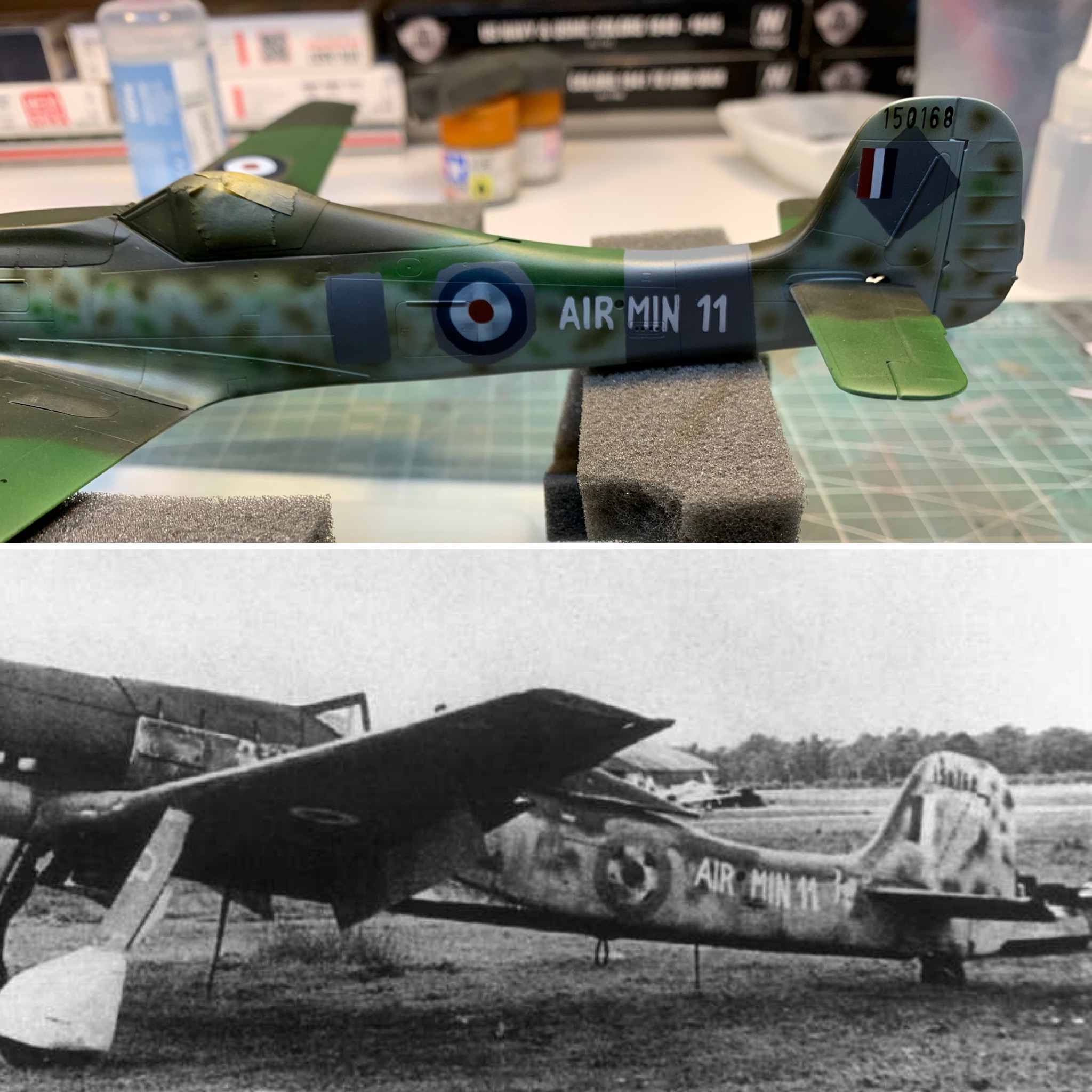

Job done, I was very happy with the result.
Weathering and Final Assembly
The remaining sub-assemblies were few; the undercarriage and various antennas were attached with CA glue. Rather than paint the PE antennas I heated them to red hot with a flame which turned them an appropriate dark metallic colour.
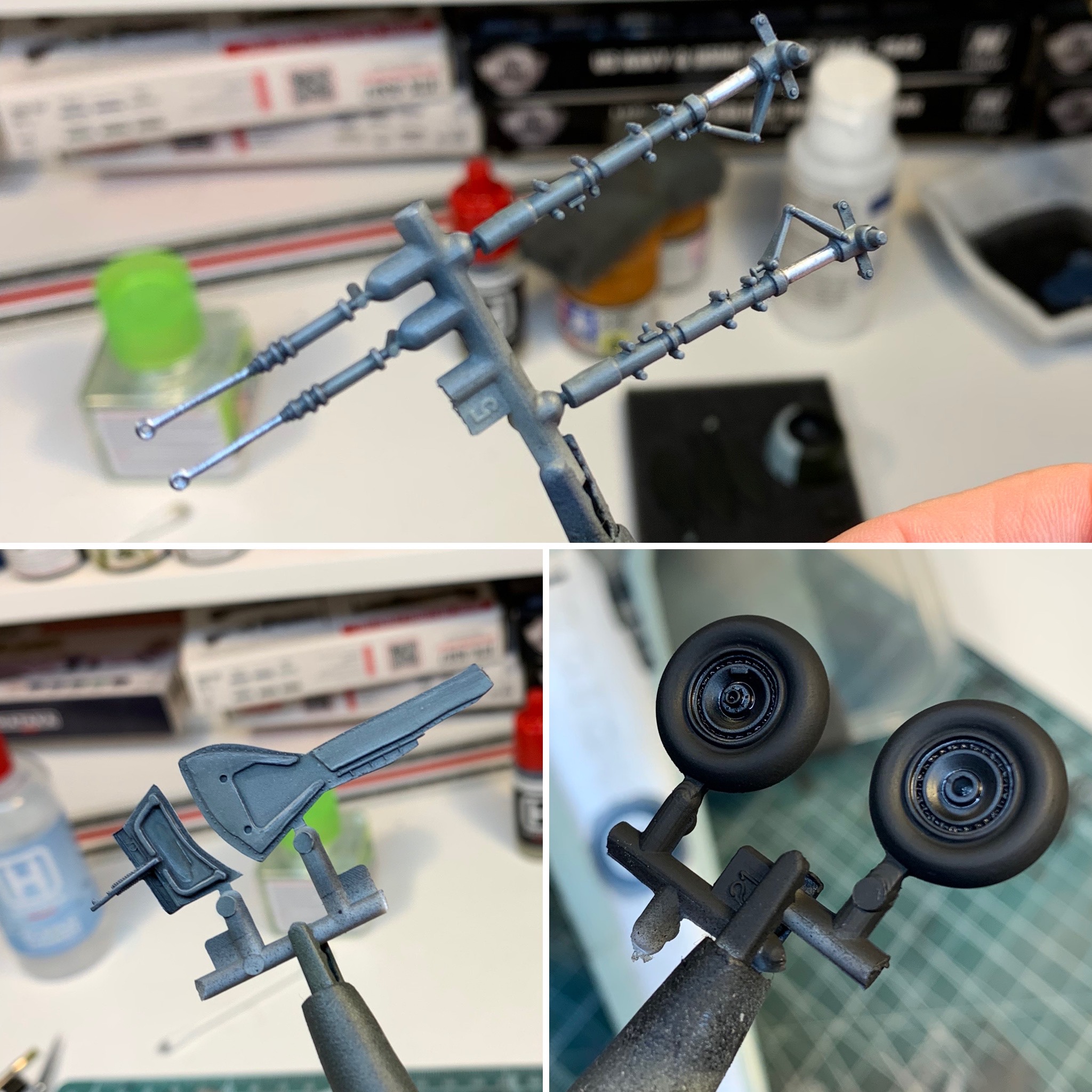


The weathering was applied with my airbrush, as usual. There wasn’t much as this was a lightly used aircraft and just required a little dirtying up commensurate with an airframe that had been left to languish for a few week in the weather.





I masked and painted the spinner. I chose to paint it in the original green – I believe it was green and not black as is sometimes shown – rather than the red which the RAF painted it prior to the Farnborough exhibition. I painted the exhausts with a mix of metallic paint and flat red-brown and then dry-brushed with a light beige to pick out the edges as it appears in photos.
The final task was actually to remove the gun barrels – which I’d painstakingly made from brass rod and then painted to represent a hollow barrel (and was really pleased with the result!) – because as a captured aircraft the guns had been removed.


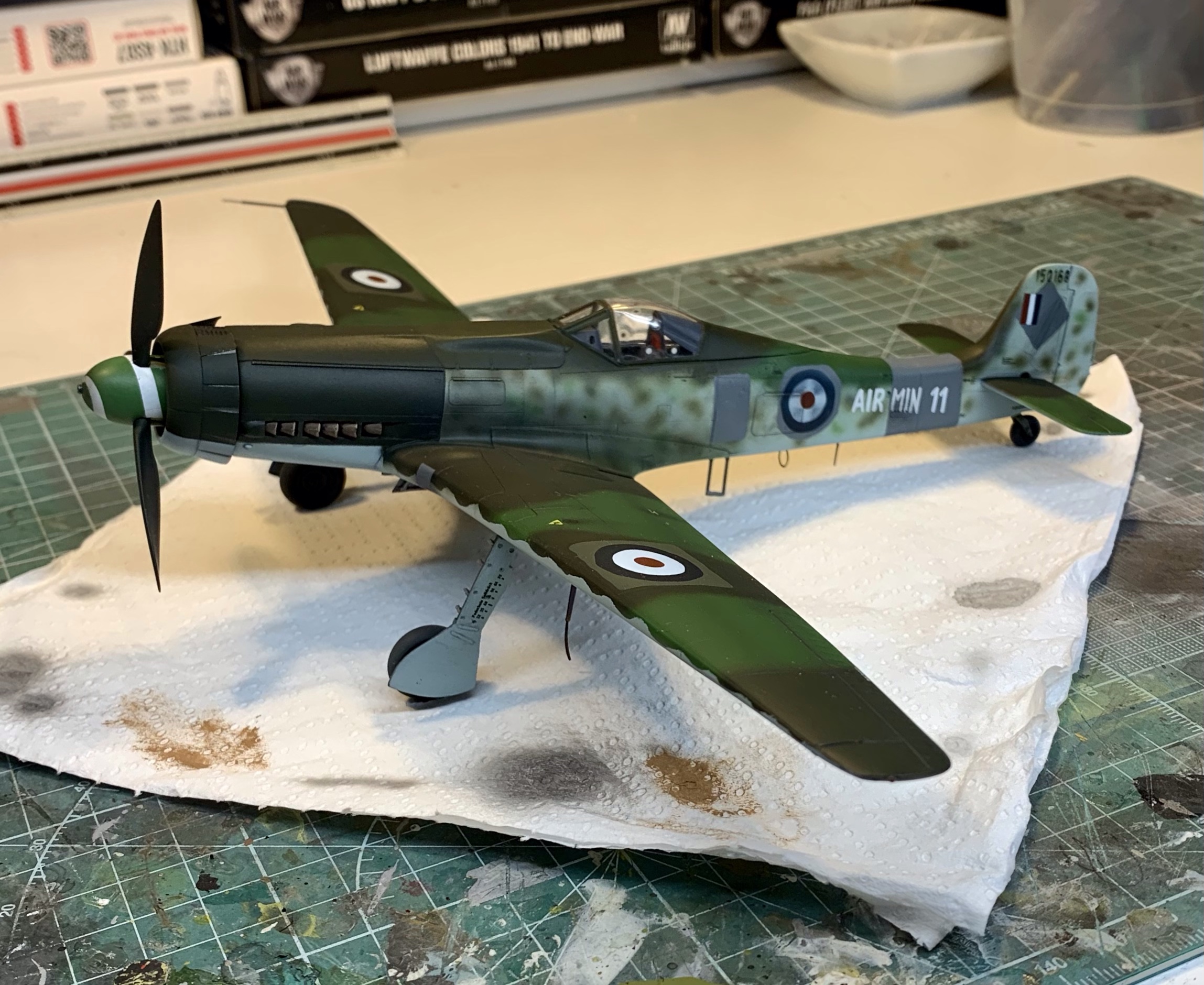
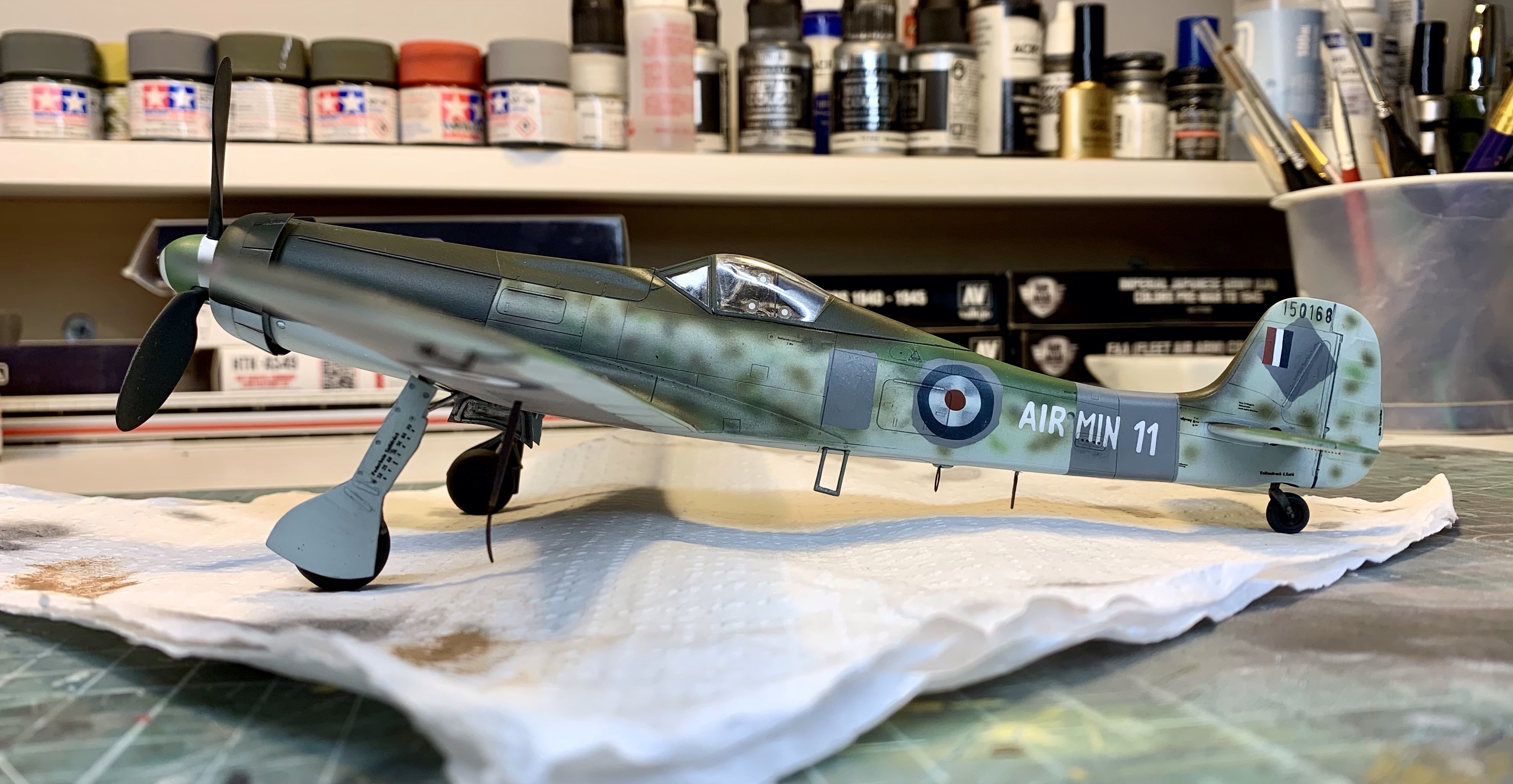
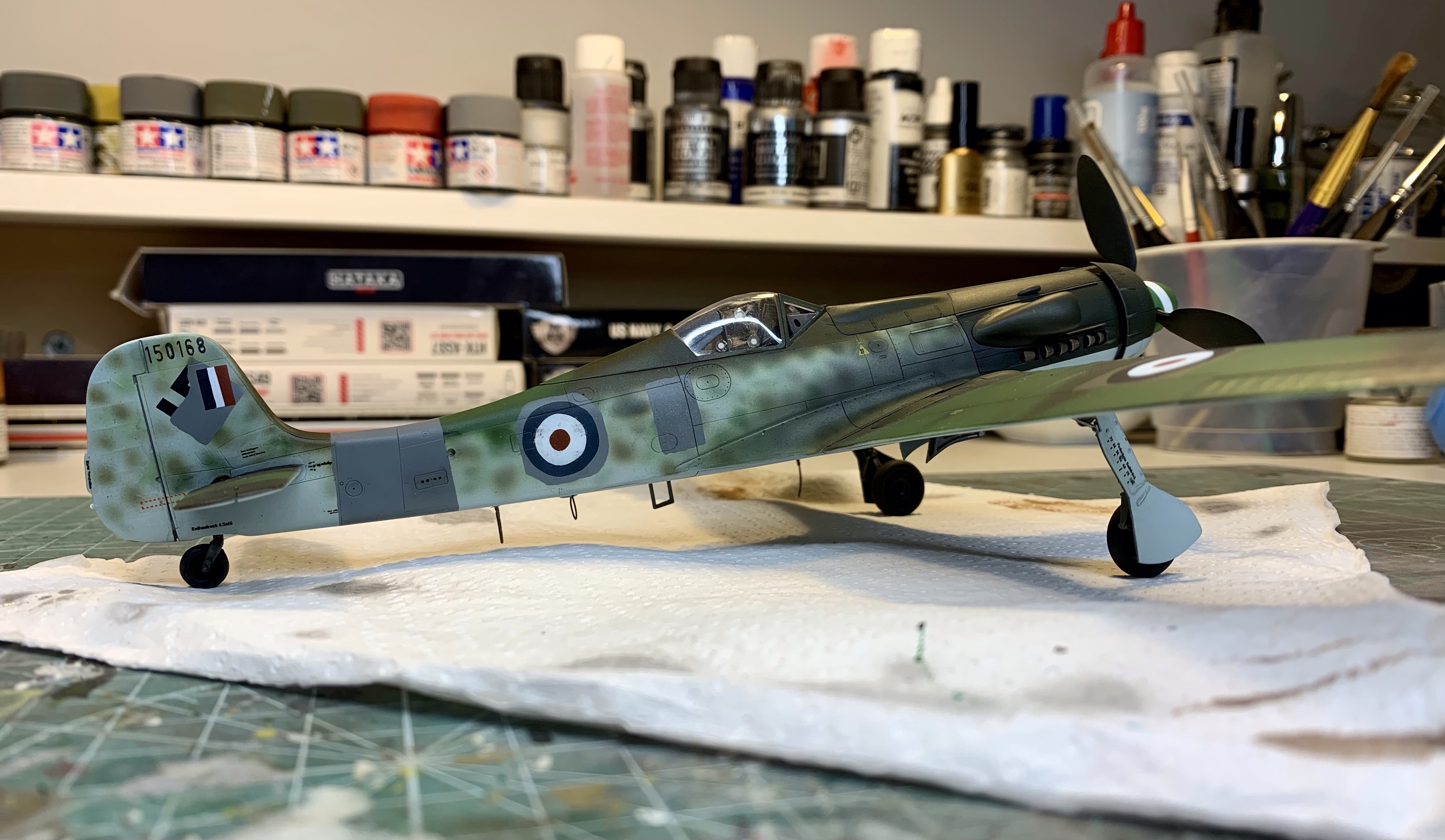

And, as is usually the case with these things, suddenly there were no more jobs to do and the model was finished.
Gallery






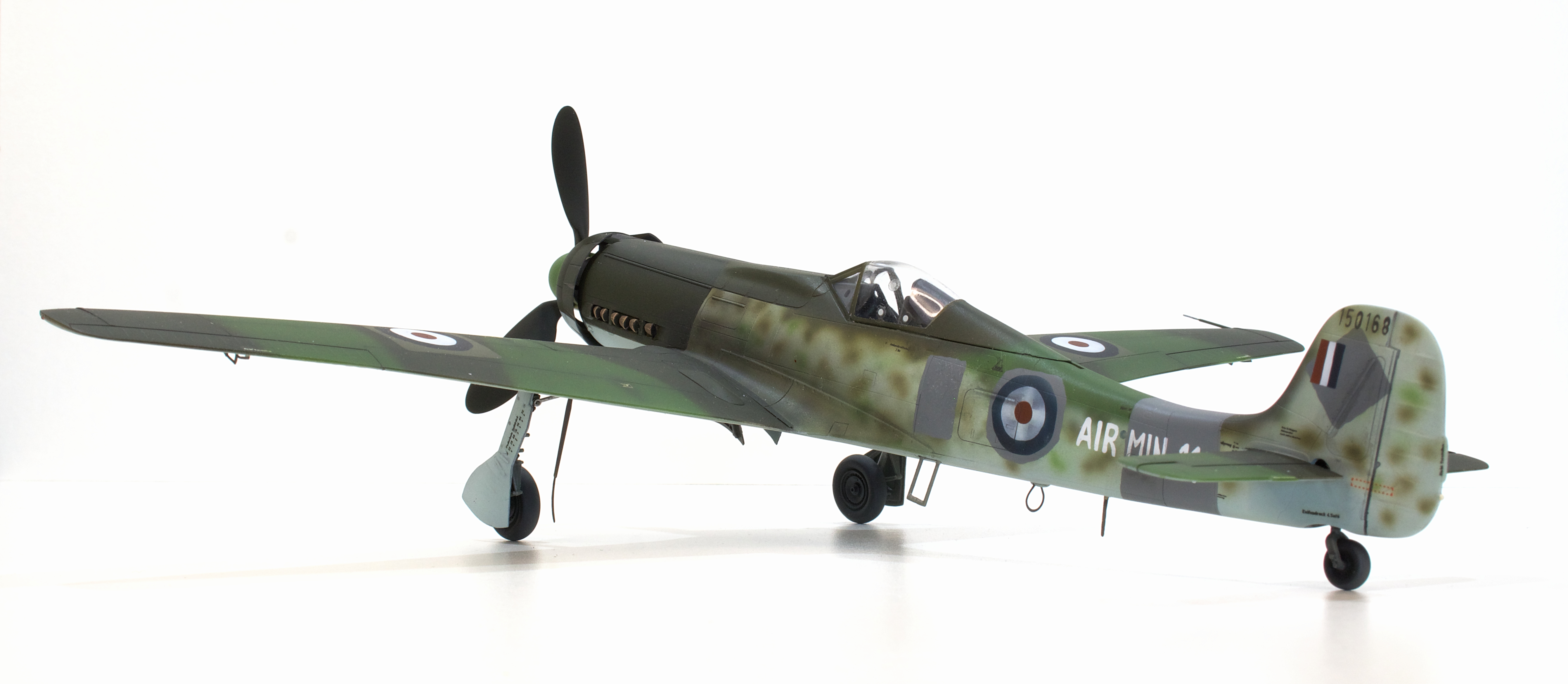








References
My references on this piece were more or less the photos included. I did however gain some great advice and assistance from a few individuals on the forums at Britmodeller.com
- https://en.wikipedia.org/wiki/Focke-Wulf_Ta_152
- https://airandspace.si.edu/collection-objects/focke-wulf-ta-152-h-0r11/nasm_A19600317000
- https://ww2aircraft.net/forum/threads/ta152-h1-uber-fighter.555/
- https://fockewulfta152h0.wordpress.com/
Copyright ©2022
This article, its text, and photos of the model is my original work and is protected by copyright in its entirety, except where noted. All research sources are listed in the References and Credits section above, including photos from official sources. All other images were sourced from the internet and are used here under protection of fair-use. Any copyrighted images will be removed or credited forthwith upon request by its rightful owner.
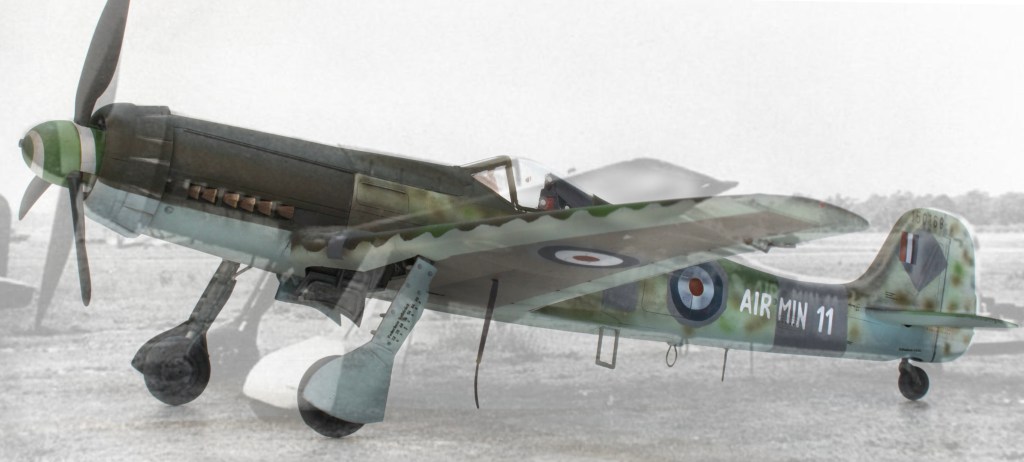
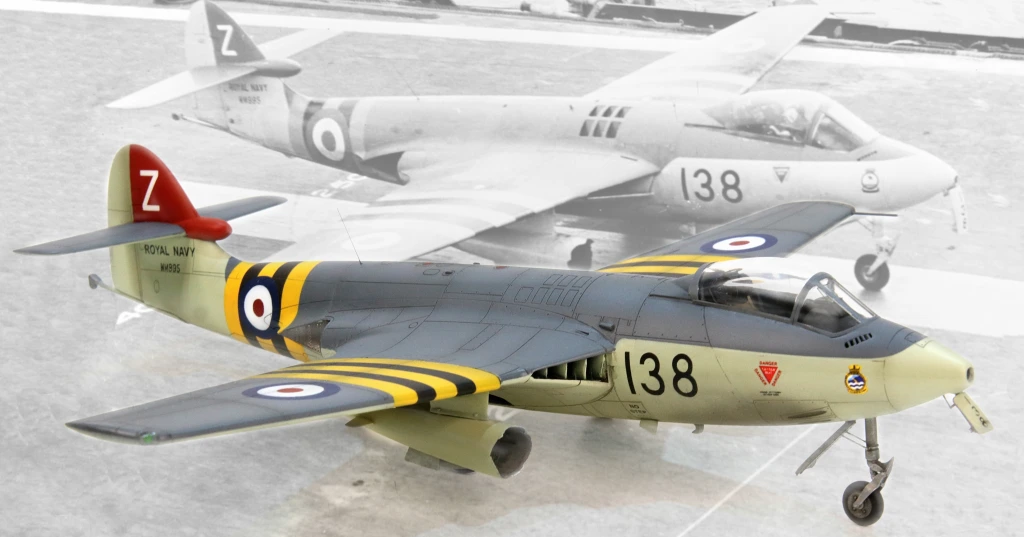



Leave a comment